A sculpture foundry in Gloucestershire is helping to create a memorial to US servicemen who lost their lives in World War One
The BBC in the United Kingdom published a nice article this month about the work of the Pangolin Foundry that is casting the sculpture for the National World War I Memorial in Washington, DC. Described by sculptor Sabin Howard as "vast and epic," the sculpture project is a challenge for even the world-renowned Pangolin Foundry, "because there is an enormous expectation for quality and consistency,” according to the Foundry's director. Click here to read the entire BBC article, including images of castings.
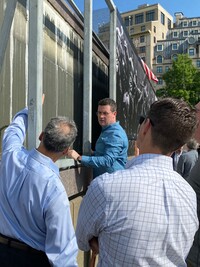
Meanwhile, preparations are underway for shipping the entire work to the Unted States in 2024, and installing it at the Memorial site. In the photo at right, Tom Povey of Pangolin (center facing camera) discusses the challenges of installing the sculpture on its platform at the Memorial site with representatives of Grunley Construction, the General Contractors for the Memorial project.
|
The sculpture, which will be the largest free-standing high-relief bronze in the Western Hemisphere, is scheduled for installation in the summer of 2024. The completed National World War I Memorial will be officially dedicated in ceremonies planned for September 13.
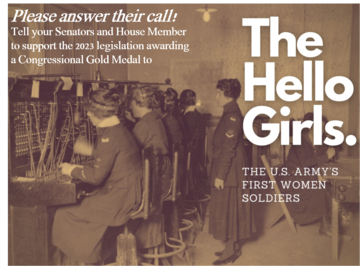
Legislation introduced in both the House and Senate chambers of Congress this Spring to award a Congressional Gold Medal to the U.S. Army Signal Corps telephone operators, known as "The Hello Girls," is gaining traction. Even though (as you may have noticed) Congress has been very preoccupied with a variety of issues recently, because of the support of Americans across the nation, the legislation has moved into double figures of cosponsors in both House and Senate.
With Memorial Day coming up soon, now is an excellent time for you to contact your Senators and Representatives, and tell them that you support this legislation which honors the brave American women who made tactical communications work for U.S. and French military forces on the front lines of World War I, but were denied veterans status and benefits after the war.
You can help to get this legislation passed through both Houses of Congress and onto the President's desk for signature. Yes, you can help! Click here for our toolbox that makes the process of reaching out to your Representative and Senators very straightforward. Please get in touch with your Senators and Representative, and tell them that you want them to support the Hello Girls Congressional Gold Medal legislation in the 118th Congress. Please answer their call!
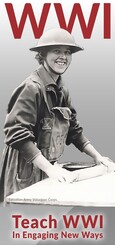
New resources, available at no cost, help bring the consequential but often overlooked First World War to life for students through images, documentaries, and augmented reality. The Doughboy Foundation, a nonprofit organization committed to World War I education, makes high-quality, compelling digital learning resources about WWI available to students and educators. The resources, which include augmented reality apps and lessons that provide an interactive and engaging way to teach and learn about World War I, can be accessed through Verizon Innovative Learning HQ, a free online education portal that empowers educators to help bring new ways of learning and next-gen tech into the learning experience. Click here to learn more about these outstanding new educational tools to help "a new generation of students to learn about this critical, yet often overlooked, chapter in our national history.”
|
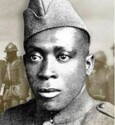
Fort Polk will become Fort Johnson during a redesignation ceremony on June 13, 2023, in honor of Sgt. William Henry Johnson, a World War I Medal of Honor recipient from North Carolina who served in the 369th U.S. Infantry Regiment. The post is one of nine Army installations being redesignated in accordance with Defense Department-endorsed recommendations from the congressional Naming Commission. “Sgt. William Henry Johnson embodied the warrior spirit, and we are deeply honored to bear his name at the Home of Heroes,” said Brig. Gen, David W. Gardner, commanding general of the Joint Readiness Training Center and Fort Polk. Click here to read more about the upcoming redesignation ceremony, and learn about Johnson's heroic service in World War I.
|
During the week of May 15-20, 2023, Daily Taps at the National World War I Memorial in Washington, DC was sounded in honor of World War I veteran Army PFC Leroy Hill.
|
American Legion Post #19 was chartered in 1921 in the name and memory of Leroy Hill. As soon as you enter the Legion’s door a large portrait of Leroy Hill is seen on the wall to your right. The black and white picture is of a young handsome man dressed in WWI Army dress uniform with a wide brimmed hat.
The day before his twenty-third birthday he traveled to Manhattan, Kansas with seven other local young men and volunteered for WWI on May 6th 1917. After physicals were conducted, only six were accepted. Manford Eaton, Harold Sebring, George McCreary, James Shean, Wiley Skinner, and Leroy Hill.
Click here to learn more about Leroy Hill.
|
|
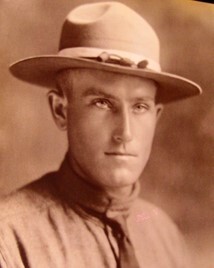 |
The Daily Taps program of the Doughboy Foundation provides a unique opportunity to dedicate a livestreamed sounding of Taps in honor of a special person of your choice while supporting the important work of the Doughboy Foundation. Choose a day, or even establish this honor in perpetuity. Click here for more information on how to honor a loved veteran with the sounding of Taps.
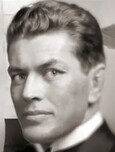
Marine Corps Veteran Gene Tunney served in both World War I and World War II. James Joseph “Gene” Tunney was born in May 1897 in New York City, and took a special interest in boxing after his father gifted him a pair of boxing gloves on his 10th birthday to defend himself against school bullies. He fought his first pro fight in July 1915 in New York City. After the U.S. entered WWI, Tunney joined the Marine Corps in 1918 and was soon on his way to France. He was convinced to box while serving and won the light heavyweight championship of the American Expeditionary Force. And the rest, as you will learn when you click here, is American sports and military history.
|
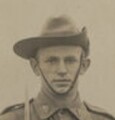
“Well, dear mother and father, Ethel, Edie and Basil… this is rather a novelty to come to Australia this way,” comes the crackling voice of Henry Miller Lanser. “The past week, training is getting heavier every day. My word, the Germans or Turks, as we hear, they are making for Egypt. Whatever happens we will stop them — from laughing anyhow — when we do start.” His words, recorded sometime between December 1914 and January 1915, are believed to be the oldest surviving vocal recording in the world of an ordinary soldier in wartime. Click here to read more, and found out how the oldest existing voicemail from a soldier came to be recorded in World War I.
|
The critical role that wounded soldiers of played in pushing prosthetic technology to meet every kind of human need, and the emergence of new approaches to therapy for those who were injured in the Great War, are spotlighted this month.
But as Christopher Schmidt at Kessler Rehabilitation Center in West Caldwell, NJ explains World War I helped transform traditional therapy into two separate categories: physical therapy and occupational therapy. Click here to read the whole article, and find out how the U.S. military began recognizing the importance of mental health services for wounded and traumatized soldiers, as well as expanding the role of physical therapy.
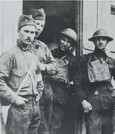
In World War I, many U.S. Navy corpsmen served alongside the Marine Corps providing medical care to combat casualties. Their undaunting courage saved the lives of many men and earned Navy corpsmen 460 major awards and citations, including two Medals of Honor, 55 Navy Crosses, 31 Distinguished Service Medals, 2 U.S. Army Distinguished Service Medals, and 27 letters of commendation, as well as almost as many French decorations of the Croix de Guerre. Click here to read more, and learn how, despite the performance of the Navy Corpsmen, "their contributions find only small reference in the many books written about the Marine Corps in World War I."
|
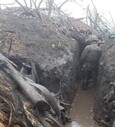
Writing on the Medium web site, author Erik Brown notes that the "Great changes in science and technology, globalization, and a belief the world is too economically linked to go to war" that inform thinking about the conflict in Ukraine in 2023, were also what the world was thinking in 1913, just before World War I erupted. Click here to read the whole thoughtful piece, and be reminded that a hundred years ago it was thought "global war was impossible. The world’s economy was too tightly linked by trade and commerce, so it would be against everyone’s national interest. Plus, even if war broke out, it would be short, because a long-scale war couldn’t be funded."
|
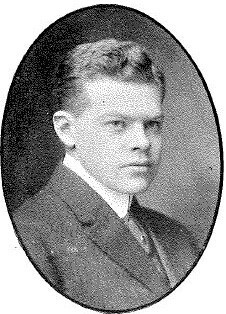
A man is only missing if he is forgotten.
Our Doughboy MIA this month is First Lieutenant Linn Humphrey Forster.
Our Doughboy MIA of the month saved the life of his Flight Leader and leading ace of the 148th Aero Squadron, First Lieutenant Elliott Springs, when on 2 September 1918 he “shot down one (enemy Fokker) off my tail and (then) got in a bad position himself.” Springs was not able to help First Lieutenant Linn Humphrey Forster of the 148th Aero Squadron and he would go missing in action that same day between Rumaucourt, France and the Arras-Cambrai Road. That day all the 148th Aero Squadron’s “B” Flight would be shot down and lost except Lieutenant Springs.
First Lieutenant Linn Humphrey Forster was born on 3 August 1890 in Buffalo, New York to Frank H. Forster and Jessie Humphries. His father would die eight years after his birth. His resourceful and enterprising mother would work as a housekeeper to provide the means to raise Linn Forster and his younger brother Frank.
After graduating from Masten Park High School in Buffalo, Linn H. Forster attended Rensselaer Polytechnic Institute, in Troy, New York. He graduated with a degree in Mechanical Engineering in 1914 and went to work in Buffalo for Crosby Company, a metal stamping firm. On 28 June 1916 he enlisted in the Signal Corps as a member of the New York National Guard’s 2nd Aero Company, and unfortunately is listed incorrectly as Louis Humphrey Forster. The unit was never activated to join General John Pershing’s Punitive Expedition, so Private Forster went back to civilian life.
Once the United States declared war on Germany, Linn H. Forster started the process to become a military aviator. On draft registration day, 5 June 1917 Linn H. Forster listed himself as medium build and medium height, with blue eyes and brown hair. He applied and was accepted to begin training to become a military aviator. The newly enlisted Cadet Forster was sent to Cornell University’s School of Military Aeronautics, for Pre-Flight training, also known as “Ground School.” There he learned the basics of flight, aircraft engines and airframe, Morse Code, and other information about being a military aviator. He was sent to Mineola to prepare for flight training overseas. Still an Aviation Cadet, but with the “official” rank as Private First Class, Forster boarded the SS Carmania on 18 September 1917 and sailed for England with 155 other Cadets believing they were all going to Italy for their flight training.
On 2 October 1917 the group landed in Liverpool, England and were whisked off to Oxford. There Linn H. Forster and his fellow Cadets became known as the “Second Oxford Detachment” and began the process of becoming military aviators all over again. They were forced to endure another pre-flight “ground school.” Prior to leaving the United States, Forster, and several other Cadets, went through basic flight training and soloed. Because of this Forster along with forty-nine other Cadets of the Second Oxford Detachment were selected to go to Grantham and begin Flight School in mid-November.
After finishing basic flight and advanced flight training, Linn H. Forster was recommended by General Pershing on 8 April 1918 for commissioning to First Lieutenant. A month later confirmation and the commission came from Washington D.C. with dates of rank back to before departing the United States. Afterwards First Lieutenant Forster completed Aerial Fighting and Gunnery courses and by 4 July 1918 Forster arrived at the 148th Aero Squadron in Cappelle Airdrome near Dunkirk, France to fly Sopwith Camel pursuit planes. Both the American 148th and 17th Aero Squadrons would fly on the British Front and under the tactical command of the RAF.
|
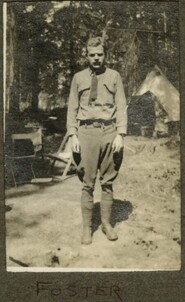
Lieutenant Forster would have his first close call on 31 July 1918. After an unsuccessful attack on an enemy balloon, four German Fokker pursuit planes attacked the flight of Camels. Forster was presumed lost in the combat by Deputy Flight Leader 1LT Harry Jenkinson Jr. But Forster was able to limp home in his badly shot up Camel.
The 148th Aero Squadron then moved to Allonville, near Amiens on 11 August 1918. During this period Forster flew daily missions, sometimes two a day, and encountered numerous enemy aircraft. On 18 August 1918 the Squadron was ordered to Remainsnil and attached to the Third British Army for its push on Cambrai. On 22 August 1918 the Squadron started the dangerous work of ground strafing and low-level bombing. That day’s mission reports Lieutenants Springs and Forster dropping bombs on the road southwest of Encoust Saint Menin and were fired on by heavy anti-aircraft batteries at Ransport on the road southwest of Queant. On 27 August 1918, Forster confirmed 1LT Springs’ tenth victory, a Fokker D.VII over Souchez-Pronville.
Lieutenant Forster’s last mission came on 2 September 1918 near Drocourt-Queant. The 148th Aero Squadron sent “A” & “B” Flights on a bombing and strafing mission along the main highway between Albert and Cambrai. As they turned home 1LT Forster and his fellow pilots of “B” Flight were ambushed from a bank of low hanging clouds by a dozen Fokker D-VIIs at 11:50 A.M. As “A” Flight dove to protect the lower “B” Flight more enemy Fokkers joined the ambush. 1LT Elliott White Springs, “B” Flight Leader immediately turned his flight to engage the enemy attack, “As soon as I would get on the tail of one Hun, another would get me and as soon as I would shake him off there would be another. Forster shot down one off my tail and got in a bad position himself.” 1LT Field Kindley, “A” Flight Leader, reported, "I noticed one of our machines which I believe to be Lieut. Forster’s with three enemy machines attacking him, so I went to his assistance.”
Due to being outnumbered by enemy Fokkers and the hectic nature of the fight, no one in the 148th Aero Squadron saw what happened to Forster. His Commanding Officer would report 1LT Forster “Missing in action Sept. 2, 1918. Last seen fighting enemy aircraft between Rumaucourt and Arras-Cambrai Road.” This would be the worst day of the 148th Aero Squadron’s history losing all of “B” Flight except the leader, 1LT Elliott White Springs. Six pilots went down, one killed, one missing in action (Forster), two became prisoners of war, one crashed and died of his wounds in a Canadian Hospital, and one landed inside British lines, his aircraft badly damaged.
On 18 October 1918 1LT Forster’s only living parent, his mother was notified that her son was missing in action. In July 1931 Jessie Humphries Forster would make the Gold Star Mothers pilgrimage to see his name on the memorial in Bony, France. Her son’s remains would never be found.
Doughboy MIA has an Aviation Team dedicated to locating missing in action American Aviators of World War One. Lieutenant Forster’s MIA case is actively being researched by this team with the goal of finding and repatriating his remains. Until that is accomplished, First Lieutenant Linn Humphrey Forster is listed on the Tablets of the Missing, Somme American Military Cemetery and has a cenotaph at Forest Lawn Cemetery in Buffalo, New York.
Want to help solve the case of First Lieutenant Linn Humphrey Forster? Click here to make a tax-deductible donation to our non-profit organization today, YOU can be part of the recovery efforts!
|
Merchandise from the Official
Doughboy Foundation WWI Store
 Lest We Forget: The Great War World War I Prints from the Pritzker Military Museum & Library. One of the nation’s premier military history institutions pays tribute to the Americans who served and the allies they fought beside to defeat a resourceful enemy with a lavishly illustrated book. It is an official product of the United States World War One Centennial Commission and is a tribute to those who served in the Army, Navy, Marine Corps, and what would become the Air Force. It serves as a lasting reminder that our world ignores the history of World War I (and the ensuing WWII) at its peril―lest we forget.
Honoring the Doughboys: Following My Grandfather's World War I Diary is a stunning presentation of contemporary photographs taken by the author that are paired with diary entries written by his grandfather, George A. Carlson, who was a soldier in the U.S. Army during World War I. Jeff Lowdermilk followed his grandfather's path through France, Belgium, Luxembourg, and Germany and returned with these meticulously crafted photographs and his own engaging stories that bring the diary to life for contemporary readers. Lowdermilk's passion for World War I and military history began as a young boy when he listened to his grandfather tell his stories about serving as an infantryman-- a "Doughboy"--in Europe during the Great War.
This and many other items are available as Official Merchandise of the Doughboy Foundation.
|